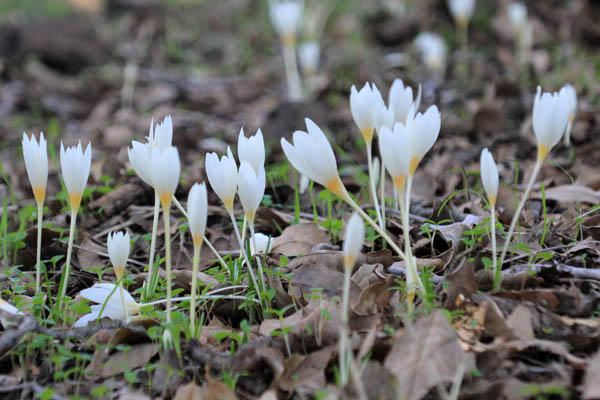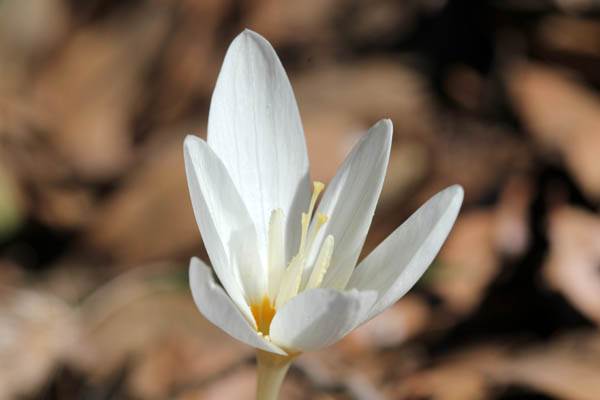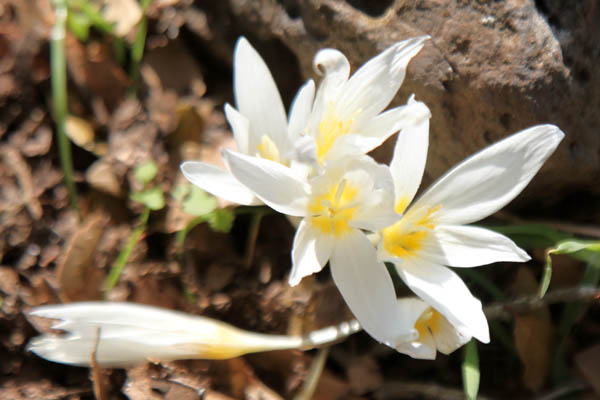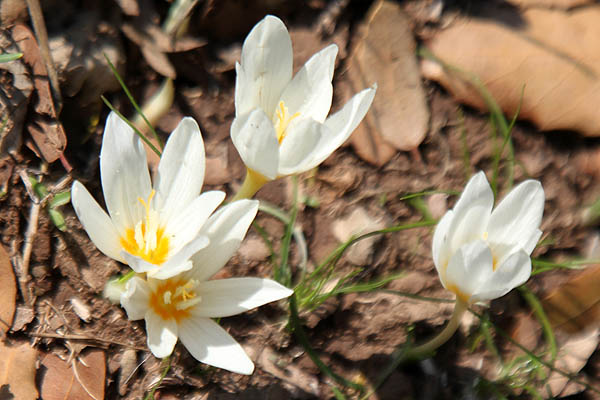כרכום צהבהב
| Scientific name: | Crocus ochroleucus Boiss. & Gaill. | |
| Common name: | Fall Crocus | |
| Hebrew name: | כרכום צהבהב | |
| Family: | Iridaceae, Iris family, אירוסיים |

|
| Life form: | Geophyte, corm | |
| Stems: | Without stem | |
| Leaves: | All basal, rosette, narrow ensiform leaf with a white central stripe along the leaf axis, margin entire | |
| Inflorescence: | Solitary | |
| Flowers: | Hermaphrodite; 3 stamens and pollen, white or cream; anthers, yellow; styles for the most part three-forked, perianth lobes white, apart from a yellow-colored muzzle | |
| Fruits / pods: | Capsule, numerous seeds | |
| Flowering Period: | October, November, December | |
| Habitat: | Mediterranean maquis and forest | |
| Distribution: | Mediterranean Woodlands and Shrublands, Montane vegetation of Mt. Hermon | |
| Chorotype: | Mediterranean | |
| Summer shedding: | Ephemeral |

Derivation of the botanical name: Crocus, Greek κρόκος, krokos "thread" and alludes to the stigmas, In Hebrew it is called: karkom (כרכום), Aramaic kurkama (כרכמא), Persian and Arabic kurkum, all meaning saffron or saffron yellow. In Talmudic Hebrew, the verb כרכם meant "to be come yellow". ochroleucus, ochros, ωχροϛ, pale; leucos, λευκοϛ, bright, brilliant, clear; white, pale; pale yellow white.



|